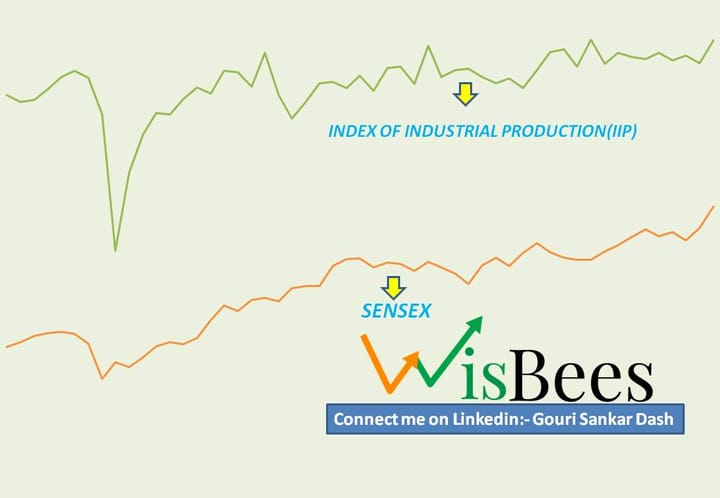Budget 23-24. Which Tax regime are you choosing?

INTRODUCTION
On 1st of February, 2023 the Union Budget for the financial year 2023-24 (i.e., 1st April to 31st March) was presented by our honorable Finance Minister Smt. Nirmala Sitharaman in Lok Sabha. According to article 112 of the Indian Constitution, the Union Budget is the country's ‘Annual Financial Statement’. In simple words, the Budget consists of three components How will and how much revenue will be generated in a year? How will and how many expenses will the country incur in a year? And what will the aim be for the upcoming fiscal year? For this year’s budget, the main focus is on three major aspects (i) Fiscal Consolidation (ii) an increase in capital expenditure (iii) the New Income Tax regime.
Fiscal Consolidation
Fiscal Consolidation refers to the reduction of the fiscal deficit which is the amount spent by the government beyond its income and is measured as a percentage of the GDP. You need money to run a business similarly, the government also needs to spend a lot of money to achieve certain goals for the economy. To build an ecosystem where businesses can operate smoothly and grow and achieve the welfare of the people of the country. Let’s say to increase the productivity of the business the government is building new roads to make trade & transportation of goods easier, cheaper, and faster. And for the welfare of the people government has announced various schemes and subsidies, the real question arises where does government bring all this money to spend?
Yes, you guessed it right ‘Taxes’, the government’s main source of income is from all kinds of taxes and duties such as Income Tax, Union Excise Duties, Corporation Tax, Goods & Services Tax (GST), etc. which accounts for about 54% of the total revenue and other sources like Borrowings and Other Liabilities, Non-Tax Receipts, Non-Debt Capital Receipts, etc. If this revenue is greater than the expenditure then the economy will be considered a ‘Surplus Economy’ and if the revenue is less than that of the expenditure then the economy will be considered a ‘Deficit Economy’. In FY 2022-23, the government’s spending stood at 39,44,909 Crore, which is 4.6% higher than the revised estimate of FY 2021-22, and the revenue of FY 2022-23 is 22,83,713 Crore. Thus, our fiscal deficit becomes 16,61,196 Crore.
Now, you must be wondering where the extra money comes from. As we have mentioned earlier that we also borrow money along with tax revenues so this is a situation when we borrow from other surplus nations to make up for the fiscal deficit. If we take too much of loans which are bad for any other nation, our government actively runs hours of discussions, meetings, campaigns, etc, to narrow down this gap. This process of reducing the fiscal deficit is called “fiscal consolidation”.
If you look at the above image which has been taken from the government's official website, clearly shows that in FY21 the fiscal deficit has drastically come down from 9.2% to 6.4% in FY23, and it is expected that in this financial year, it will reduce further below 6%.
To make this happen the government either has to decrease the spending or increase the revenue or they can do both but India is a developing nation, so it is kind of difficult to decrease the spending.
Capital Expenditure
Analyzing the expenditure side of the government, there are two types of expenditure: revenue expenditure and capital expenditure. Revenue expenditure consists of salaries, wages, supplies, etc. these are recurring in nature and are not incurred for asset creation. On the other hand, Capital expenditure is incurred for long-term assets like roads, rails, buildings, infrastructure, etc. for example, the recently inaugurated “Maharashtra Samruddhi Mahamarg” which connects Nagpur to Shirdi has reduced the travel time by four and a half hours than the old path “Yavatmal”. Therefore, capital expenditure results in building long-term assets for the government as well as increasing productivity, the revenue expenditure is for the ongoing operations of the government. ‘The capital investment outlay is being increased steeply for the third year in a row by 4.5% of the GDP to spur investment infrastructure and to incentivize for the complementary policies actions with a significantly enhanced outlet of 1.3 lakh crore’ - Finance Minister.
If the Capital Expenditure is increasing so fast then the gap must be widening. Well, that is not the case, the ratio of spending to economic gain is 1:2.5 i,e. every 1 rupee spent for Capex results in the making of 2.5 rupees for the economy. So more the Capex the more it will reduce the deficit of the country in the future.
I need to count the number of zeros there in 10 lakh crores. Now the question is where the government is going to spend all this money, which sector or stock to keep focus in?
As you can see from the above picture, the government has spent one-fourth of the budget paying interest on all its outstanding debt on past borrowings which haven’t been paid back. Why is it paying so much in interest? To fill the gap deficit, the government must take loans from other countries annually. This cycle repeats resulting in increasing the interest payment. In 2021-22, the interest payments are estimated to be 15% higher than in 2019-20.
On infrastructure and transport, Sitharaman has allocated Rs 2.4 lakh crore towards Indian Railways capital expenditure this year, nine times higher than the amount in the financial year 2013-14. The funds will mostly be spent on building tracks, new coaches, electrification, and developing facilities at stations. The government has continued its infrastructure push as it has increased capital expenditure to 10 lakh crores. “The key aspects are capital increase outlays for railways to an all-time high, along with additional focus on logistics that will impact the overall cost of business and possibly address the larger issue of higher trade costs within the country. While the hard numbers are welcome, the more nuanced push for better development across cities by focusing on urban planning reforms is welcome,” says Sanjay Kumar, partner, of Deloitte India. Stocks to keep an eye on are Mahindra logistics, all-cargo logistics, etc. also, by 2025 the government plans to roll out 400 Vande Bharat trains. Hence, Jindal stainless is to be kept an eye on.
Another strategy to reduce the gap is Disinvestment, this year’s budget has set a target of 51,000 crores. ‘Disinvestment is simple terms is taking out your money from an existing investment’ the government reduces the investment to relieve itself from the burden of maintaining a non-performing government enterprise. For example, loss-making “Air India” was sold to the Tatas only after the government changed the track from selling 76% of its stake in the national carrier to putting on the block its entire 100% holding as well as giving bidders an option of deciding how much debt they were to take over. Now the government will not be paying salaries or managing the business rather it will only collect taxes when the businesses make a profit. They can allocate this money for better utilization of that money.
New Tax Regime
Smt. Nirmala Sitharaman our finance minister on her 5th annual budget has introduced a new tax regime / new Slab rates whose key change is that the rebate amount has been increased to 7 lakh per annum.
Let’s first understand what is income tax slab rates. It is simply the tax that an individual needs to pay to the government based on their annual income i.e. high earning individuals will have to pay tax at a higher rate and a lower earning individuals will have to pay tax at a lower rate.
Old Tax Regime:
- Up to Rs. 2.5 lakh - Exempted
- Rs. 2,50,001 to 5,00,000 - 5%
- Rs. 5,00,001 to 10,00,000 - 20%
- Rs. 10,00,001 to 15,00,000 - 30%
- Above Rs. 15,00,000 - 30%
Under the old tax regime if a person Mr. X whose annual income is 20 lakh, then under this tax regime he will have to pay (without deducting Sections 80C, 80D, etc.): -
= (5% of 5,00,000-2,50,000) + (20% of 10,00,000-5,00,000) + (30% of 20,00,000-10,00,000)
= (5% of 2,50,000) + (20% of 5,00,000) + (30% of 10,00,000)
= 12,500+1,00,000+3,00,000
= 4,12,500
Despite having higher tax rates this system has various kinds of deductions, exemptions, and other allowances like PPF, ELLS, EPF, life insurance, principal and interest payments on a mortgage, health insurance, investments in NPS, child tuition fees, and interest on savings accounts.
New Tax Regime:
- Up to Rs. 3,00,000 - Exempted
- Rs. 3,00,001 to 6,00,000 - 5% (income limit for tax rebate increased to Rs. 7,00,000 from Rs. 5,00,000)
- Rs. 6,00,001 to Rs. 9,00,000 - 10%
- Rs. 9,00,001 to Rs. 12,00,000 - 15%
- Rs. 12,00,001 to Rs. 15,00,000 - 20%
- Above Rs. 15,00,000 - 30%
Under the New tax regime if Mr. X now chooses the new tax regime for the same annual income, then (Note: Deductions based on Sections 80C, 80D, etc.): -
= (5% of 6,00,000-3,00,000) + (10% of 9,00,000-6,00,000) + (15% of 12,00,000-9,00,000) + (20% of 15,00,000-12,00,000) + (30% of 20,00,000-15,00,000)
= (5% of 3,00,000) + 10% of 3,00,000) + (15% of 3,00,000) + (20% of 3,00,000) + (30% of 5,00,000)
= 15,000+30,000+45,000+60,000+1,50,000
= 3,00,000
Therefore, the tax liability is not 4 lakhs in the old and 3 lakhs in the new tax slabs which is only applicable to the old scheme and this may decrease the tax liability in the old scheme significantly.
NOTE: For those who are confused that the government has replaced the old tax slab rates then you are wrong. The government has introduced a new option which you may or may not choose depending on your preference.
Advantages of the New Tax Regime
- One can choose between the two tax schemes.
- There is no obligatory requirement to invest in tax-saving schemes and insurance plans you don’t need.
- Since, you are not putting your money in the tax-saving schemes other investing options are still available where you can put your money.
Disadvantages of the New Tax Regime
- The present exemptions will be slowly erased from the new tax regime.
- With no exemptions, the total taxable amount will be higher.
- Good for people with less investments and those who already have the investment schemes like PPF will suffer as there will be no deductions.
- It will affect the long-term savings of the individual.
Article Sources
https://www.indiabudget.gov.in/



